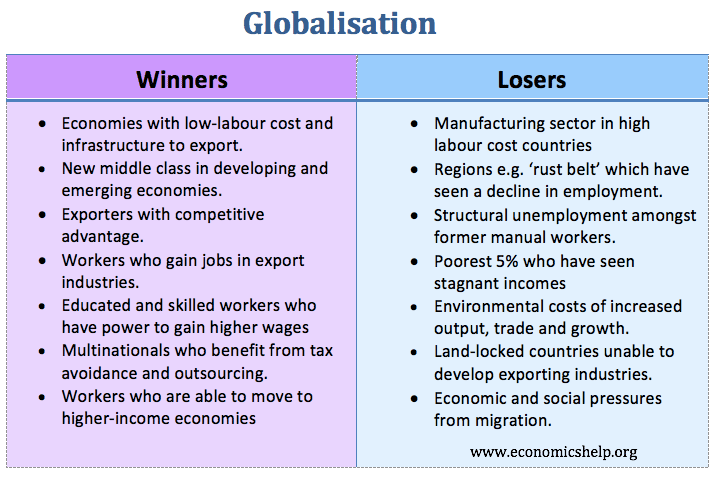Globalization poses many problems, including increased economic gains for already powerful countries at the expense of developing countries, a more homogeneous global culture overall and a host of negative environmental effects. Globalization is the process through which countries become increasingly connected through developments in technology, trade and cultural exchange. globalisation problems leads to increases foreign direct investment of a company from its country of origin into other countries. According to Stephanie Rohac , foreign direct investment is the international flow of capital by creating or expanding a subsidiary in another country. It may be made through established a new enterprise or acquisition of an existing entity. A firm becomes multinational in the case of establishing in two or more countries business enterprises through FDI.
Some problems, such as unemployment cannot be solved in a fair way unless globalization is abolished, while other problems, such as the exploitation of workers can be solved without interfering with social security or globalization. The possible solutions to stop unemployment are through protectionism, or the decreased taxes on capital, and, a possible solution would be to certify goods which are produced within the European standards, to stop the exploitation of the developing world’s workers. Many of Africa’s poorest countries suffer from a marked lack of infrastructure including poor roads, limited electricity, and minimal access to education and telephones. But while landline use has not changed appreciably during the past ten years, there’s been a fivefold increase in mobile phone access; more than a third of people in Sub-Saharan Africa have the ability to access a mobile phone . Even more can use a “village phone”—through a shared-phone program created by the Grameen Foundation.
Using these definitions, some industrialized countries are the United Kingdom, Belgium, Denmark, Finland, France, Germany, Japan, Luxembourg, Norway, Sweden, Switzerland, and the United States. Literature about globalization is produced by sociologists, political theorists, economists, historians, anthropologists, and journalists. Globalization is a term variously employed, even by experts within a single discipline. There is substantial debate, not only about its definition, but also about its significance, and how it shapes our world.
- “Comparative advantage, economic growth and free trade.” Accessed Feb. 28, 2020.
- The net result of placing markets as the primary agent of all human endeavours is that today we are witnessing a world where‐economy is building castles in air; politics is suffering from cognitive freeze; culture is experiencing shock and military is in a state of stupor.
- Recently, a Japanese newspaper, the Nihon Keizai Shimbun, reported2that an analysis of Huawei’s smartphones showed that the usage rate of US-made parts has dropped from about 11% in the recent 4G model to about 1% in the 5G flagship model.
- When I first set out to see for myself whether globalization has been for better or for worse, I was perplexed, too.
This allows businesses to draw effective and eco-friendly strategies in their planning and development due to their corporate social responsibility. Today, this advantage is gaining more light in the analysis of the pros and cons of globalization. The I.M.F. argues that it often saves countries from even more budget cuts. ”Countries come to us when they are in severe distress and no one will lend to them,” Rogoff says. ”They may even have to run surpluses because their loans are being called in.
Political globalization, Social globalization, and Economic globalization. It is believed that this approach would eliminate all the negative aspects of globalization in time. Firstly, It will be fruitful for many sectors but will still leave many people and groups vulnerable. They state that they should always welcome every opportunity and they should find out multiple solutions to every problem.

Rodrik argues that the countries in the study may have begun to trade more because they had grown and gotten richer, not the other way around. China and India, he points out, began trade reforms about 10 years after they began high growth. The strategy, which became known as import substitution, produced high growth — for a while. Latin American governments made their consumers buy inferior and expensive products — remember the Brazilian computer of the 1970’s?
